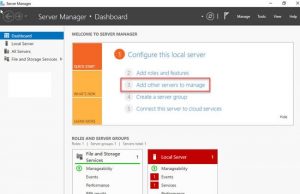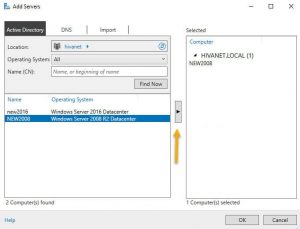How Manage multiple servers in Windows Server
How to Manage multiple servers in Windows Server
Managing multiple servers in Windows Server 2016: You may have multiple servers in different versions of Windows, both graphically and Core. To manage these servers more easily, you can use the Add another server to manage section on the page. Server manager used! In the following, we explain how to manage multiple servers in Windows Server 2016.
You can manage multiple remote servers in Windows Server using the Server Manager console. The servers you want to manage using Server manager can run Windows Server 2016, Windows Server 2012 R2, Windows Server 2012, Windows Server 2008 R2, or Server 2008! Note that you cannot manage a newer version of it with an older version.
The number of servers you can manage using a single server console varies depending on the amount of data you request from the managed servers and the hardware and network resources available to the management server computer. For example, suppose the amount of data requested by one of the managed servers approaches the maximum resource capacity of that computer. In that case, the managed server can experience slow responses from the manager’s server and delays in updates.
Add servers to manage.
You can add servers to the Management Server using three methods in the Add Servers box:
- Active Directory: Active Directory Domain Services adds servers to find the Active Directory directory in the same domain as the local computer.
- DNS: Logging into the Domain Name System (DNS), search for servers to manage by computer name or IP address.
- Import: Import multiple servers. To import a file that contains servers listed by computer name or IP address! Specify multiple servers.
It doesn’t matter what version of Windows Server you use! Because several different versions of it may be used in one organization! The only catch is that Server Manager running Windows Server 2012 R2, Windows Server 2012, 2008R2, or 2008 cannot be used to manage servers running Server 2016. In the following, we use the first method, with the help of Active Directory, to manage two servers with Windows Servers 2008 and 2016.
Steps to manage multiple servers in Windows Server.
Before starting, we need to check the communication between the two servers. (including IP addresses, DNS addresses, turning off firewalls, and finally, ping test).
1- From the Server manager page, enter Add another server to manage.

2- In the Name field, enter the name or the first few letters of the desired server name and click on Find Now. (without entering the name, you can click on Find now, which will display a list of servers in the domain)!

3- Click on the desired server and by clicking on the small arrow! We transfer the desired server to the right column!

4- We wait for a little until the blue bar on the top of the server manager screen finishes its work, then we enter All server. You can see that the desired server has been added, whose name is new2008 here.

When the added server is online, we can apply the desired settings on it! A list of accesses is visible to us by right-clicking on the desired server. Here, because the 2008 server is additional, it is impossible to add a role and feature.
For example, on other servers, you can use Add role and feature to install the desired role on the added server! Or even use PowerShell ISE to create a session on the added server! and apply the desired settings of an organization using scripting.
Tip:
Sometimes, after adding a server, Kerbero’s target resolution error can be seen on the All server page instead of the online status. In this case, the added server must restart once and log in to Windows Server with its domain user.











